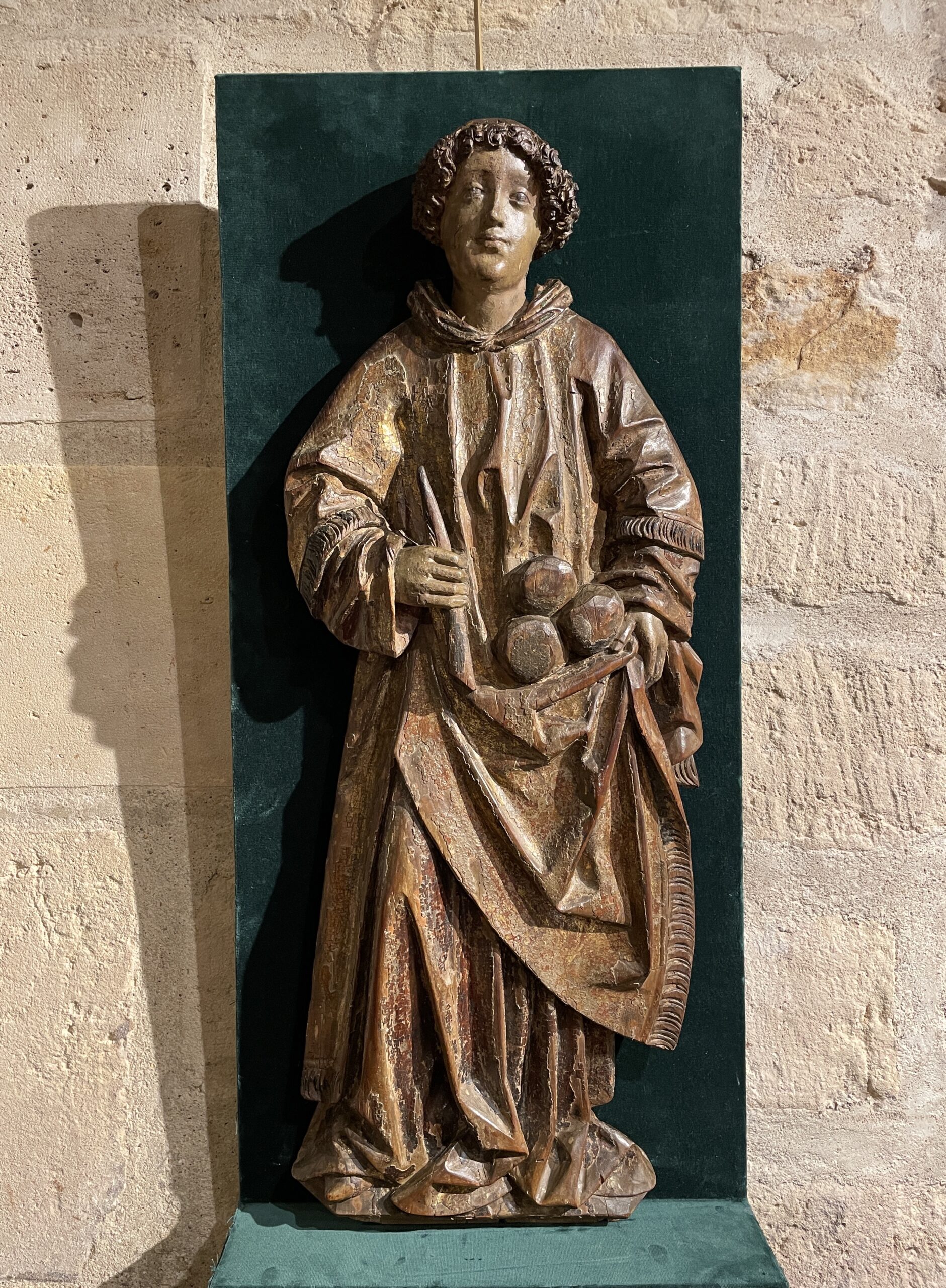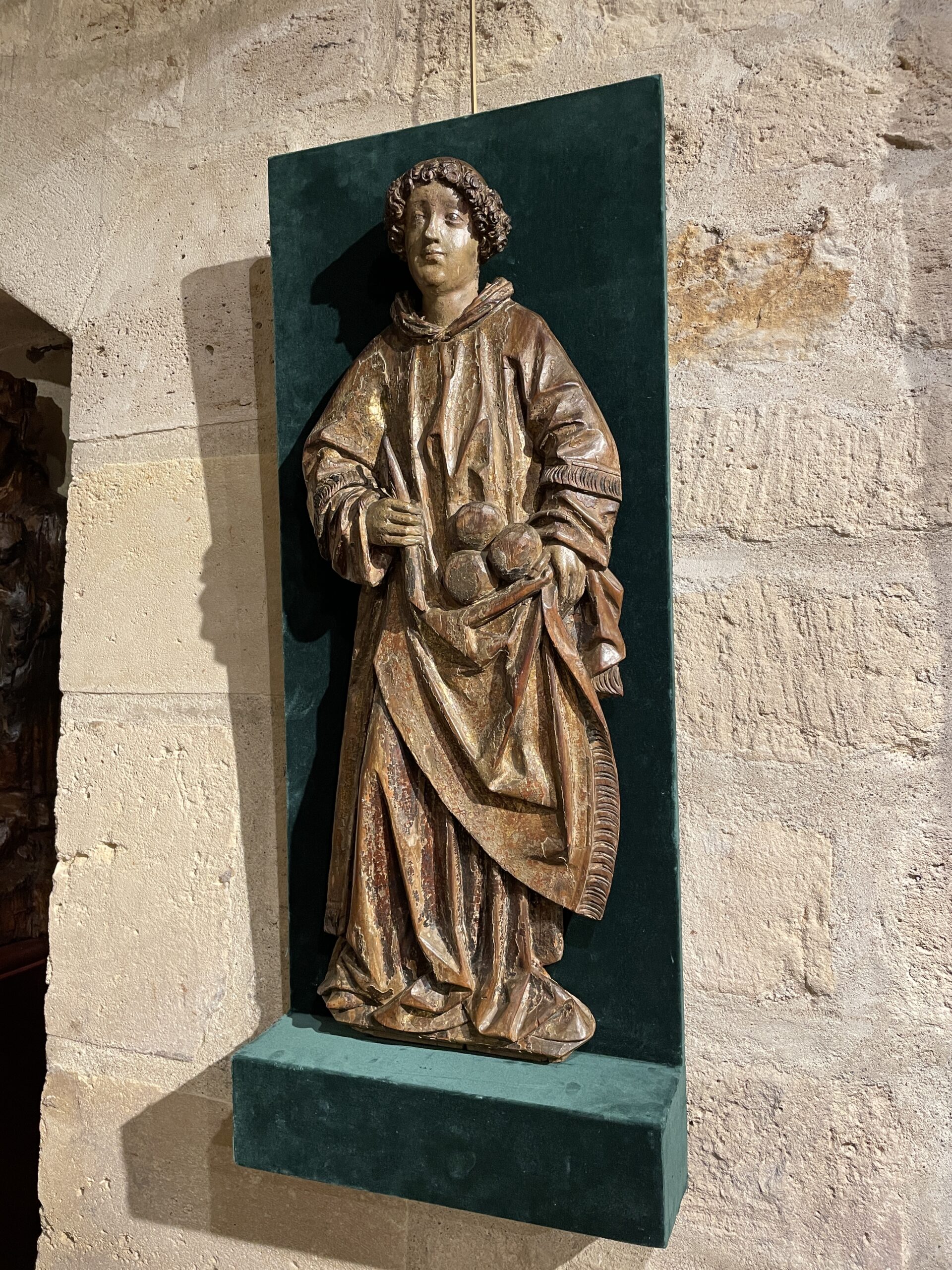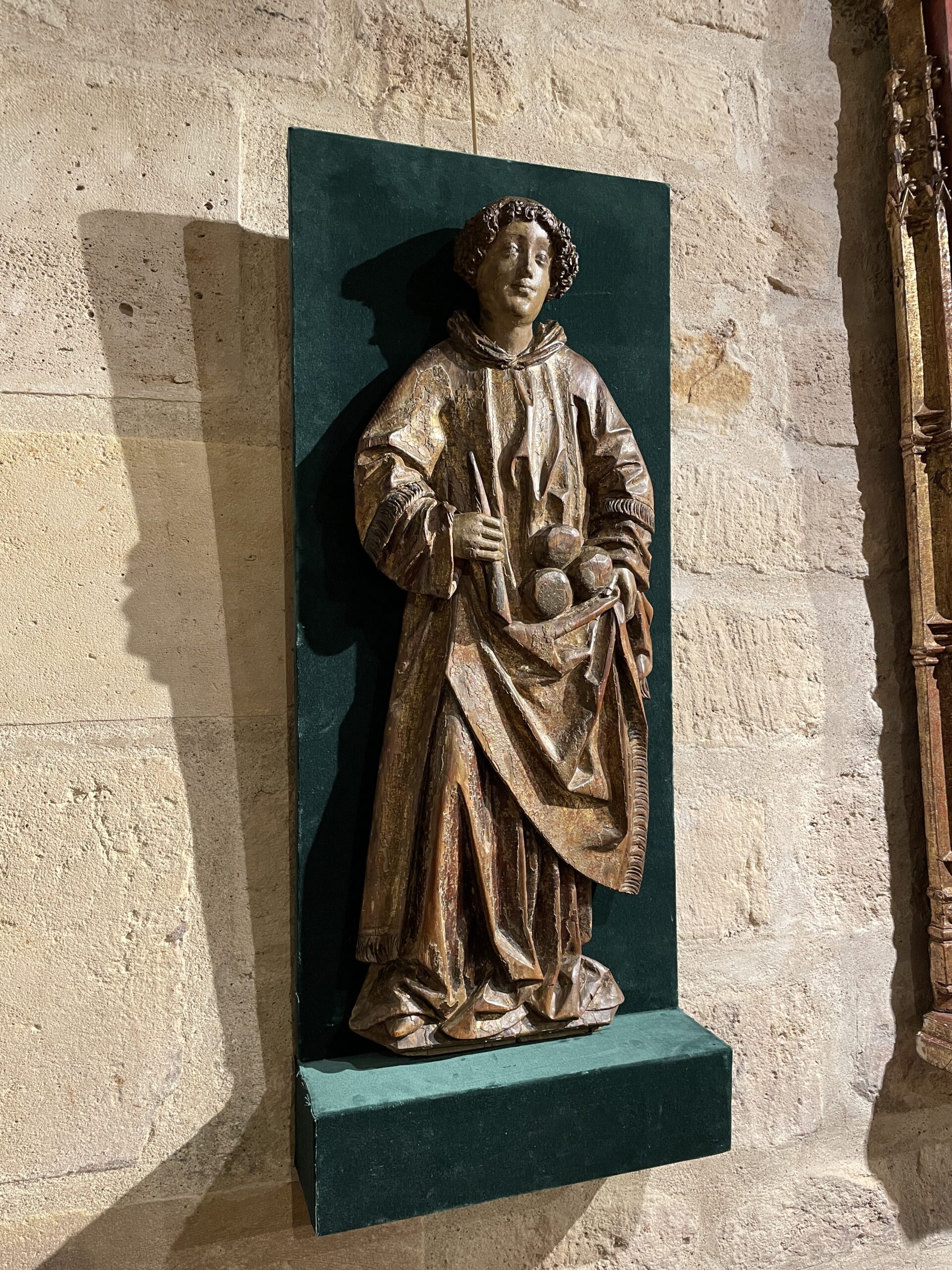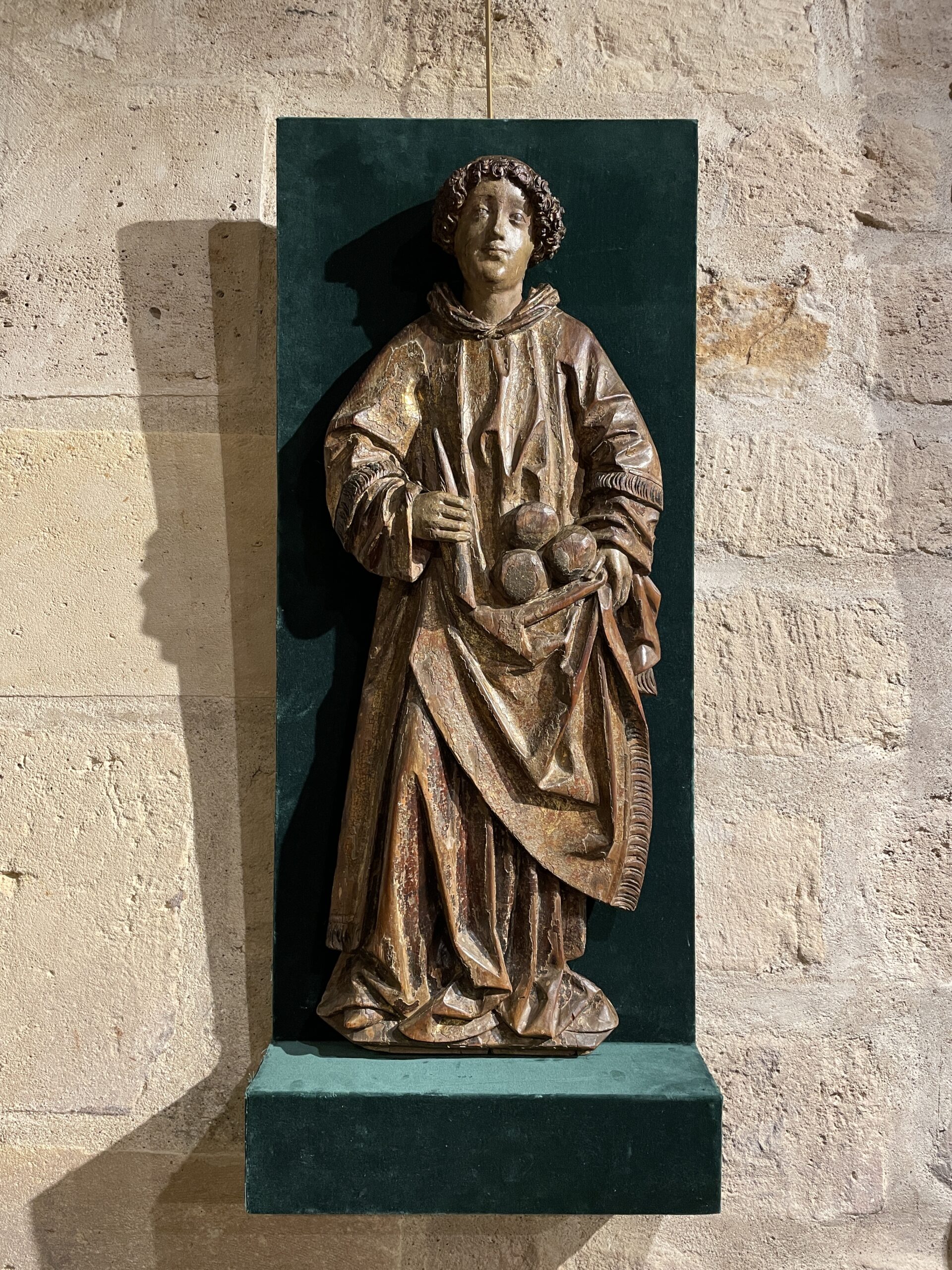Description
Hagiography of Saint Stephen
According to the De Miraculis Sancti Stephani Protomartyris, an anonymous 10th-century manuscript, on the very day of his birth, the devil kidnapped Saint Stephen and replaced him in his cot with a small demon. He then laid the swaddled child at the door of a bishop. The bishop, hearing the wailing, came out and found the child being suckled by a white doe, who spoke up and advised him to adopt the newborn.
Some time later, Stephen returned to his father’s house and, with a sign of the cross, expelled the demon that had taken his place.
According to chapter 6 of the Acts of the Apostles, he was then chosen to become the first deacon, responsible for assisting the apostles.
He argued with the Jewish rhetoricians, who had him arrested for blasphemy, because he pronounced the name of God, which was unpronounceable in the Jewish religion. He was condemned to be stoned to death, making him the very first martyr of the Christian faith and earning him the nickname of “protomartyr”.
His cult developed and spread to the four corners of Christendom, so much so that an exceptional number of churches were dedicated to him.
Description
Saint Stephen wears a tunic covered by a thickly woven dalmatic. The treatment of the folds in the drapery gives it great materiality and realism. This outfit is a reminder of his status as a deacon.
With his left hand, he is lifting up a part of his garment on which are three stones, the instruments of his martyrdom. In the other, he is holding a martyr’s palm.
He is young and beardless. His face is surrounded by a crown of well-defined curls. His slightly drooping eyes give him an air of melancholy.
This remarkably fine sculpture is a wonderful example of the talent of Swabian sculptors.
From around 1475 to 1530, the Swabian region became a particularly dynamic and creative centre of production. This art, often referred to as “late Gothic”, was characterised by a stylistic renewal imbued with gentleness and a reserved sensitivity. The importance of detail and the virtuoso work of drapery are also noteworthy. Production was dominated by wood sculpture. Limewood was a distinctive feature of this region’s production. This soft, light wood gave the carver a great deal of freedom and allowed for a fine, beautifully polished finish.
This revival had its origins in the art of Nicolas de Leyde, who was active in Strasbourg in the 1460s. His style broke with the refined and delicate art of the International Gothic style in force throughout Europe around 1400. The figures became more authentic, more realistic. Bodies became denser. Clothes came to life with deep, broken folds; fabrics were heavy and had great decorative value. Polychromy was also intended to be illusionistic. Painting was used to recreate the texture of the materials, the richness of the textiles and the natural complexion of the figures.
The spread of images through engraving and the great mobility of artists led to the success of this style, which conquered the Upper Rhine, Swabia, Tyrol and Franconia, helping to create a common stylistic identity in these regions. The economic boom in Germany’s flourishing cities was conducive to the development of original production. Attracted by this prosperity, numerous workshops were set up to fulfil orders from religious communities, the Church and the laity, including a clientele of wealthy middle-class citizens.
Bibliography
Michael Baxandall, South German Sculpture, 1480-1530, Victoria and Albert Museum, 1974
Coll., Sculpture allemande de la fin du Moyen-âge dans les collections publiques françaises : 1400-1530, Musée du Louvre, 1991
Sophie Guillot de Suduiraut, Sculptures médiévales allemandes, conservation et restauration, La Documentation française, 1993
Sophie Guillot de Suduiraut, Dévotion et séduction, Sculptures souabes des musées de France vers 1460-1530, Somogy, 2015
Claude Lapaire, Sculpture sur bois du Moyen-âge, Genève : Musée d’art et d’histoire, 1986
Louis Réau, Iconographie de l’art chrétien, III/1, Presses Universitaires de France, 1958









